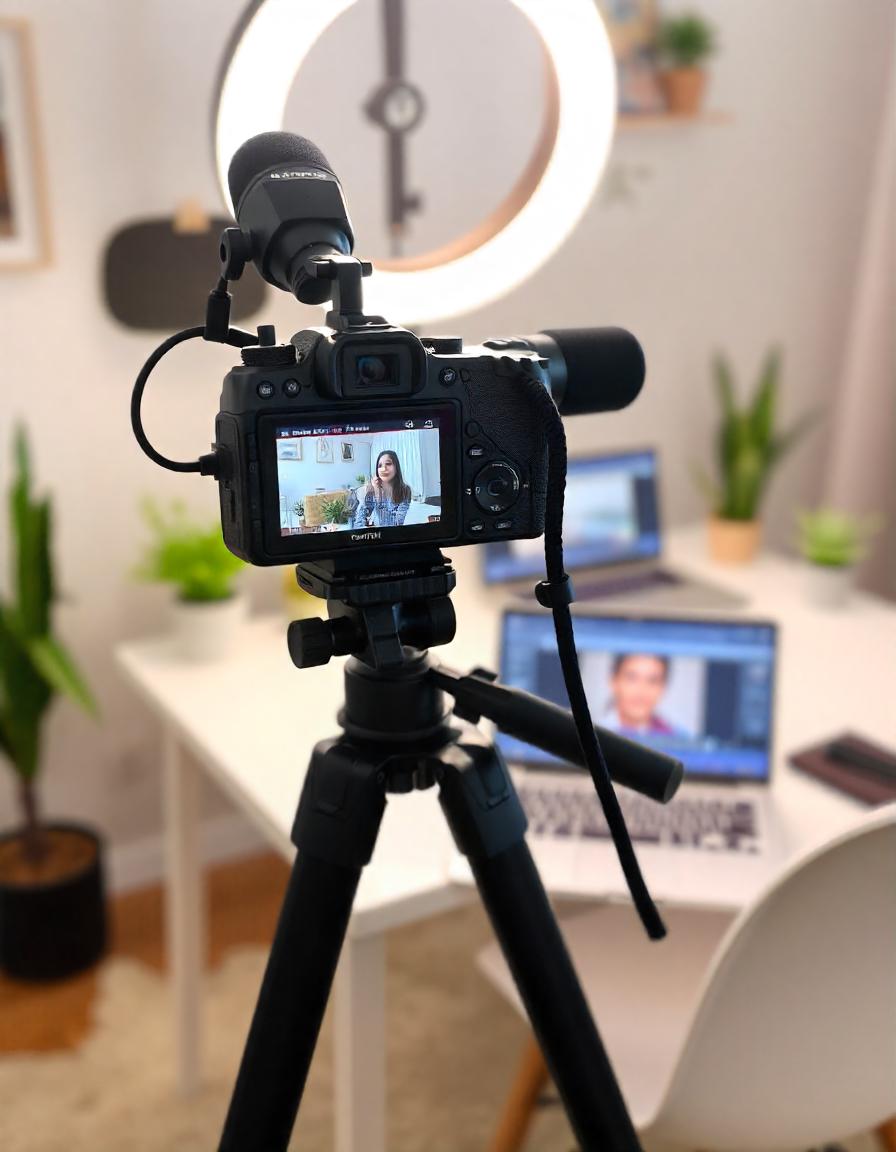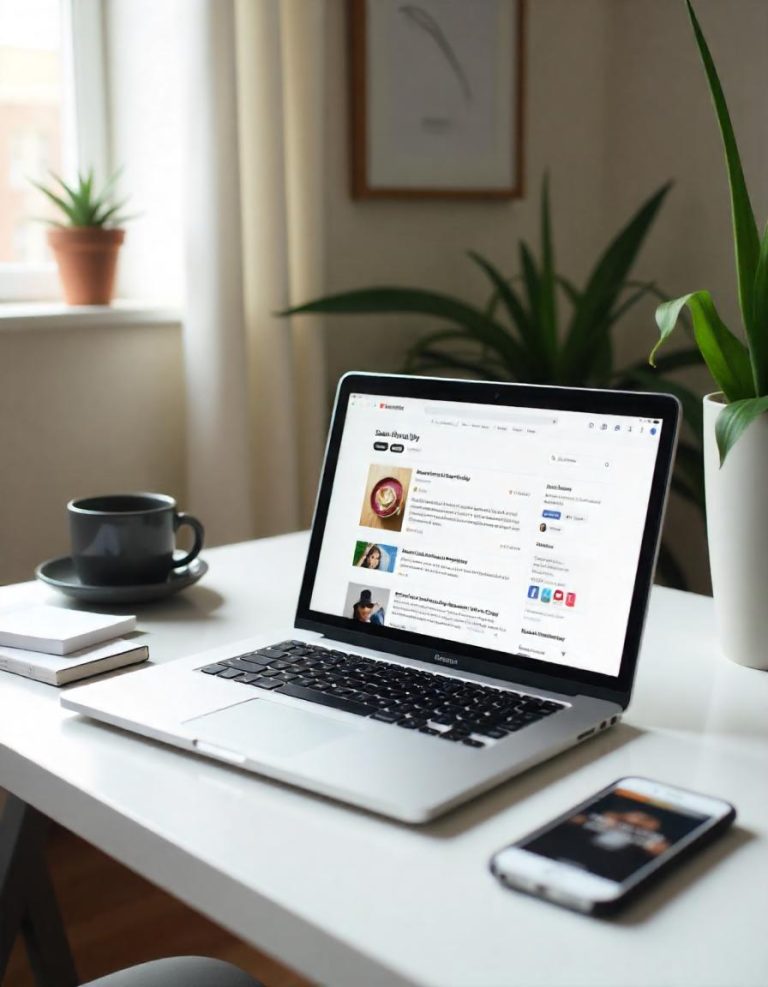Video Blogging Camera: Choosing The Right Gear For Successful Vlogging
Video blogging, or vlogging, has become one of the most popular ways to connect with audiences online. Whether you’re sharing your daily life, offering tutorials, or reviewing products, the quality of your videos plays a significant role in attracting and retaining viewers. One of the most important pieces of equipment for video blogging is the camera. In this article, we’ll explore the factors to consider when choosing a video blogging camera and recommend some top options available on the market.
How to Earn Money Online – The Ultimate Guide to Financial Freedom!
Why Choosing the Right Camera Matters
Your camera is the heart of your video blog. A high-quality camera can elevate the overall production value of your content, making your videos more engaging and professional. On the other hand, poor video quality can make it harder to hold viewers’ attention and negatively impact your channel’s growth. The right camera ensures that your content looks crisp, clear, and visually appealing, which is crucial for attracting a loyal audience.
Key Factors to Consider When Choosing a Video Blogging Camera
When shopping for a camera to use for video blogging, consider the following features:
1. Video Quality (Resolution)
The resolution of your camera determines how sharp your video will look. For vlogging, it’s recommended to go for at least 1080p (Full HD) resolution. However, if you want your content to stand out, opting for a 4K camera can provide even sharper visuals and future-proof your videos.
- 1080p: Ideal for most vlogs, offering great video quality.
- 4K: Provides superior resolution, allowing for more detailed shots and better zooming without sacrificing clarity.
2. Frame Rate
Frame rate refers to the number of frames (or images) captured per second. A higher frame rate makes the video appear smoother, especially in fast-moving scenes. A standard frame rate is 30 fps (frames per second), but if you plan to shoot action or slow-motion videos, look for cameras that support 60 fps or higher.
3. Audio Quality
Good audio is just as important as good video. Viewers will often forgive a slightly lower video quality if the sound is clear and crisp. Many video bloggers use external microphones because the built-in microphones on most cameras don’t offer the best sound quality.
Look for cameras with:
- External mic input: Allows you to plug in an external microphone for better sound.
- Noise-canceling features: Reduces background noise, which is crucial if you’re filming in busy environments.
How to Earn Money Online – The Ultimate Guide to Financial Freedom!
4. Autofocus
Autofocus is crucial for maintaining sharp focus, especially if you’re vlogging alone or filming dynamic scenes. Look for cameras with fast and reliable autofocus systems that will automatically keep you in focus as you move around.
5. Portability
Vlogging often involves shooting on the go, so having a camera that’s lightweight and easy to carry is essential. Cameras that are compact yet powerful are a good choice, as they allow you to shoot high-quality content without the burden of heavy equipment.
6. Battery Life
Vlogging sessions can be long, and the last thing you want is for your camera to run out of battery mid-shoot. Cameras with longer battery life or those that allow for external power sources are ideal for extended filming sessions.
Top Video Blogging Cameras to Consider
There are several great options on the market that cater to different needs and budgets. Here are some of the best cameras for video blogging:
1. Canon EOS M50 Mark II
- Resolution: 4K
- Key Features: Compact size, 4K video recording, Dual Pixel autofocus for smooth focus transitions, microphone input, vari-angle touchscreen.
- Why It’s Great for Vlogging: The Canon EOS M50 Mark II is an excellent choice for both beginners and intermediate vloggers. It’s lightweight, offers clear 4K video, and has an articulating screen that lets you monitor your shots while filming.
2. Sony ZV-1
- Resolution: 4K
- Key Features: Built-in microphone with windscreen, smooth autofocus, real-time eye autofocus, flip-out screen, image stabilization.
- Why It’s Great for Vlogging: The Sony ZV-1 is designed specifically for vlogging. It offers incredible autofocus performance, great audio, and features a flip-out screen so you can see yourself while shooting. Its portability and ease of use make it ideal for vloggers who film on the go.
How to Earn Money Online – The Ultimate Guide to Financial Freedom!
3. GoPro HERO11 Black
- Resolution: 5.3K
- Key Features: Waterproof, rugged design, ultra-wide field of view, HyperSmooth stabilization, great for action shots.
- Why It’s Great for Vlogging: If your vlogging involves outdoor or action-based content, the GoPro HERO11 Black is a fantastic option. It’s durable, shoots in stunning 5.3K resolution, and provides excellent stabilization for smooth footage during movement.
4. Panasonic Lumix GH5
- Resolution: 4K
- Key Features: In-body image stabilization, 4K video at 60 fps, excellent low-light performance, microphone input, interchangeable lenses.
- Why It’s Great for Vlogging: The Panasonic GH5 is a more advanced option, perfect for those looking to elevate their vlogging to a professional level. It’s packed with features like 4K recording at 60 fps, superb image stabilization, and great low-light performance.
5. Logitech StreamCam
- Resolution: 1080p
- Key Features: USB connectivity for easy live streaming, auto-focus, built-in microphone, vertical video mode.
- Why It’s Great for Vlogging: If you’re just starting out or want an easy setup for streaming or webcam vlogging, the Logitech StreamCam is an affordable and reliable option. It provides clear 1080p video and is designed for both horizontal and vertical videos, making it a great tool for social media vlogging.
How to Earn Money Online – The Ultimate Guide to Financial Freedom!
Choosing the right video blogging camera is an important decision that will directly impact the quality of your content. By considering factors like video resolution, audio quality, autofocus, and portability, you can ensure that your camera setup will meet your vlogging needs. Whether you’re a beginner looking for an easy-to-use option or a seasoned pro seeking advanced features, there’s a camera out there that’s perfect for your vlogging style.
Investing in quality equipment will pay off in the long run, helping you build a stronger connection with your audience through professional-looking and engaging content. Happy vlogging!







